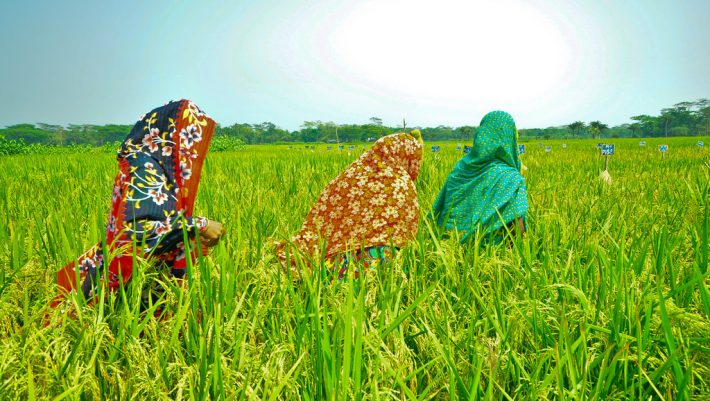Effects of irrigation regimes and rice varieties on methane emissions and yield of dry-season rice in Bangladesh
- From
-
Published on
02.05.23
- Impact Area

The role of rice in global food security is unavoidable as it is one of the three most essential food crops globally, after wheat and maize. In Bangladesh, the area under rice cultivation, particularly boro rice, must be extended to meet the increasing food demand, which may cause significant CH4 emissions and ultimately accelerate the effects of global warming. Most previous studies have been conducted to quantify the effects of fertilizer and water regimes on GHG emissions from rice fields. However, the impacts of different rice cultivars under various water regimes on CH4 emissions, rice yields, and yield-contributing characteristics are poorly documented.
Rice is the staple food crop in Bangladesh and is cultivated in 11.4 million hectares (ha) across three crop-growing seasons per year. Of the three seasons, boro (dry season, December/January to March/April) results in an area under rice crop (irrigated rice) production of 4.8 million hectares.
The total rice production in Bangladesh was 36.6 million tons (t) in 2019/20, and Boro rice contributed the majority of the total production. Although rice plays a critical role in food security, it is associated with environmental pollution due to the emissions of greenhouse gases (GHGs), particularly methane (CH4).
Irrigated rice cultivation emits CH4, one of the main GHGs responsible for global warming and climate change. Lowland rice cultivation with continuous irrigation makes the soil environment anoxic, which favors the bacterial decomposition of organic materials through methanogenesis and produces CH4 gas. It is reported that rice cultivation accounts for 1.5% of all anthropogenic GHG emissions worldwide.
Related news
-

CGIAR Multifunctional Landscapes at COP30: Advancing Adaptation and Nature-Based Solutions
Multifunctional Landscapes Science Program10.11.25-
Adaptation
-
Biodiversity
-
Environmental health
-
Environmental health & biodiversity
-
Mitigation
COP30 in Belém, Brazil is being heralded as a pivotal “COP of adaptation” and a…
Read more -
-

CGIAR and OPAPRU Sign MOU to Study Climate Action and Peacebuilding in the Philippines
Ibukun Taiwo10.11.25-
Climate adaptation & mitigation
Torrential rains, armed clashes and other climate shocks have displaced more than 100,000 people …
Read more -
-

New CGIAR Evidence Sets Out Blueprint for a Low-Carbon, Regenerative and Equitable Food System Transition at COP30
Eisen Bernard Bernardo10.11.25-
Adaptation
-
Climate adaptation & mitigation
-
Mitigation
As countries prepare to gather in Belém for COP30, CGIAR today launched seven new evidence-based…
Read more -
